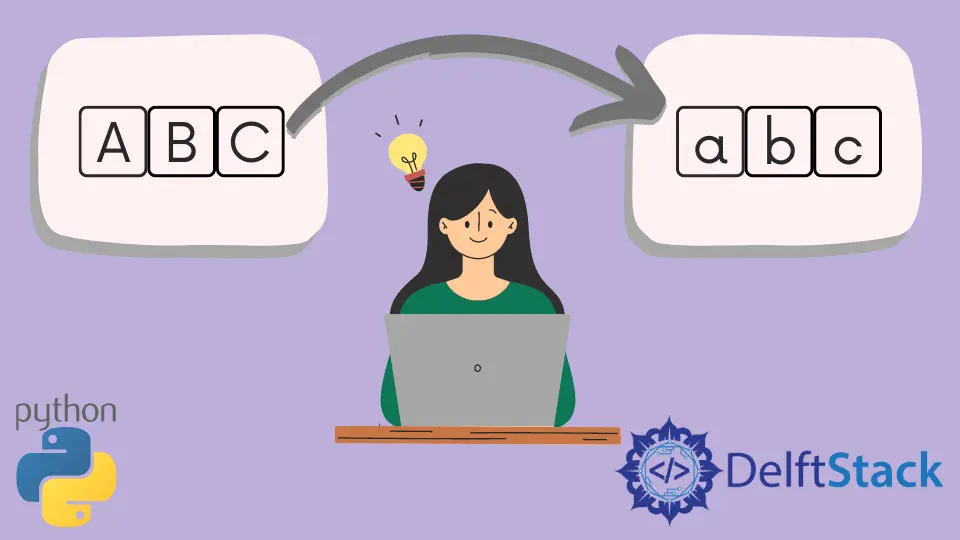在 Python 中将列表转换为小写
Vaibhhav Khetarpal
2023年10月10日
-
在 Python 中使用
str.lower()函数和for循环将字符串列表转换为小写 -
在 Python 中使用
map()函数将字符串列表转换为小写 - Python 中使用列表推导方法将字符串列表转换为小写

列表可用于在单个变量中存储多个项目。在 Python 中,我们可以创建一个字符串列表,其中包含在列表中的不同元素用单引号或双引号括起来。
本教程演示了如何在 Python 中将字符串列表转换为小写。
在 Python 中使用 str.lower() 函数和 for 循环将字符串列表转换为小写
str.lower() 方法用于简单地将给定字符串中的所有大写字符转换为小写字符并提供结果。类似地,str.upper() 方法用于反转此过程。
除了 str.lower() 函数,for 循环也用于迭代给定字符串列表中的所有元素。
以下代码使用 str.lower() 函数和 for 循环将字符串列表转换为小写。
s = ["hEllO", "iNteRneT", "pEopLe"]
for i in range(len(s)):
s[i] = s[i].lower()
print(s)
输出:
['hello', 'internet', 'people']
在 Python 中使用 map() 函数将字符串列表转换为小写
Python 提供了一个 map() 函数,可用于在任何指定的可迭代对象中的给定元素之间应用特定过程;这个函数返回一个迭代器本身作为输出。
一个 lambda 函数可以定义为一个紧凑的匿名函数,它接受任意数量的参数并且只包含一个表达式。在此方法中,lambda 函数也将与 map 函数一起使用。
以下代码使用 map() 函数和 lambda 函数在 Python 中将字符串列表转换为小写。
s = ["hEllO", "iNteRneT", "pEopLe"]
a = map(lambda x: x.lower(), s)
b = list(a)
print(b)
输出:
['hello', 'internet', 'people']
Python 中使用列表推导方法将字符串列表转换为小写
列表推导式是一种更短的方法,可以根据现有列表的给定值创建要形成的列表。此方法基本上创建了一个新列表,其中所有项目都是小写的。
以下代码使用列表推导将字符串列表转换为小写。
s = ["hEllO", "iNteRneT", "pEopLe"]
a = [x.lower() for x in s]
print(a)
输出:
['hello', 'internet', 'people']
Vaibhhav is an IT professional who has a strong-hold in Python programming and various projects under his belt. He has an eagerness to discover new things and is a quick learner.
LinkedIn